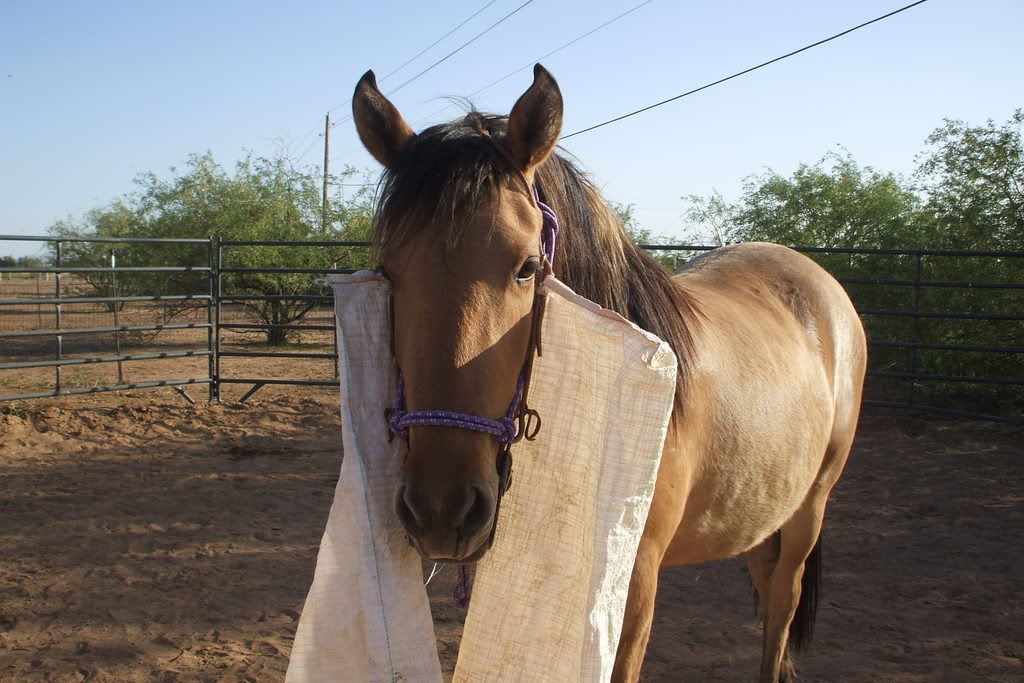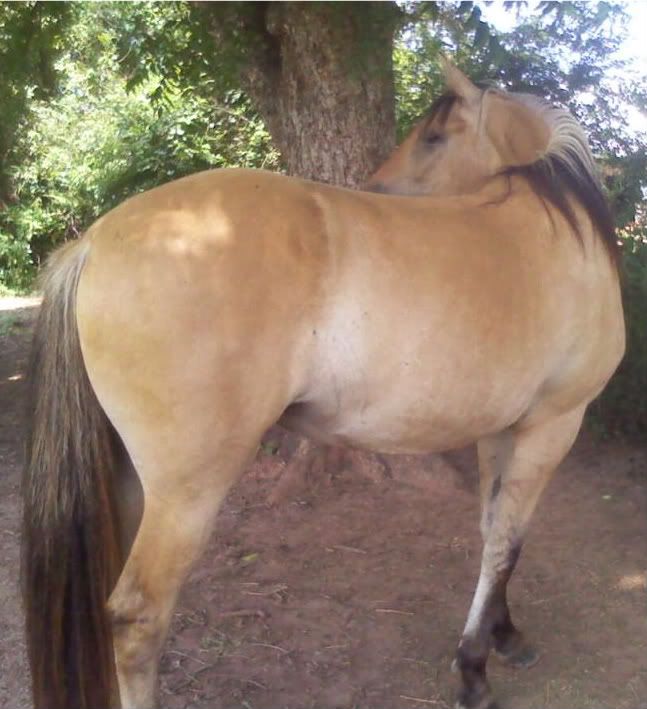Post by DianneC on Feb 7, 2008 12:08:14 GMT -5
I thought it would be fun to hear what people feel works really well for them. Anything from birth to advanced under saddle training is fair game.
Haltering a young foal was the hardest thing for me to learn. So I'm tickled to have worked out a way to do that. It starts with scratching their butt (or rubbing if scratching is to "predator" like). Once they are really into that I work forward to their withers, shoulders and neck. Most foals love it and will do anything for a rub or scratch in their favorite places. I teach them to walk up and touch their nose to my outstretched closed hand. The first time I will hold out my hand and they normally will sniff it or I'll gently touch my hand to their nose. I'll make a cluck noise with my tongue and walk up and scratch their favorite places. This teaches them to approach but not run me over and lets me walk up to them. This is done each time I go into the pasture and soon becomes our greeting even when they are grown.
I introduce the halter at about one month by holding it out for them to investigate. Each time their nose touches it I cluck and scratch them. Then I start moving the halter by small increments over their nose and up their face, clucking and scratching for holding still. The point is to not mind something going over their nose so I use a larger halter so there is a bigger opening at this point and I take care at first not to drag it on the nose. Then we progress to my reaching over the neck, grasping the long end of the halter and sliding the nose part way on. This is already familiar and I progress up the face with the nose piece and wiggle it so they are quite comfortable. Clucking and scratching for each time they are still. From there it is a short step to fastening the halter.
The cluck tells them when they are doing it right and marks the behavior I want, holding still, with the promise of a good scratch as a reward. If they get concerned then I'm going too fast and I back up a step or two to find something they are comfortable with and where they can give me a right response. The smaller the step the better and the faster it goes.
The end result is that I have foals that think a halter is the best thing in the world. I'll work in short sessions of about 10 -15 minutes and expect the halter part to take about four sessions, but there isn't any rush. I'll continue reinforcing the haltering every time I fasten it with a cluck and a scratch for quite some time. I'll add lowering their head and putting their own nose in the halter along the way.
I don't teach putting the halter over the nose and flipping the long piece over the poll, which some people use to halter. It seems that the flip startles them too much. That should be taught after they are solid in haltering this way though, as someone will use it someday.
OK, who else has something they like?
Haltering a young foal was the hardest thing for me to learn. So I'm tickled to have worked out a way to do that. It starts with scratching their butt (or rubbing if scratching is to "predator" like). Once they are really into that I work forward to their withers, shoulders and neck. Most foals love it and will do anything for a rub or scratch in their favorite places. I teach them to walk up and touch their nose to my outstretched closed hand. The first time I will hold out my hand and they normally will sniff it or I'll gently touch my hand to their nose. I'll make a cluck noise with my tongue and walk up and scratch their favorite places. This teaches them to approach but not run me over and lets me walk up to them. This is done each time I go into the pasture and soon becomes our greeting even when they are grown.
I introduce the halter at about one month by holding it out for them to investigate. Each time their nose touches it I cluck and scratch them. Then I start moving the halter by small increments over their nose and up their face, clucking and scratching for holding still. The point is to not mind something going over their nose so I use a larger halter so there is a bigger opening at this point and I take care at first not to drag it on the nose. Then we progress to my reaching over the neck, grasping the long end of the halter and sliding the nose part way on. This is already familiar and I progress up the face with the nose piece and wiggle it so they are quite comfortable. Clucking and scratching for each time they are still. From there it is a short step to fastening the halter.
The cluck tells them when they are doing it right and marks the behavior I want, holding still, with the promise of a good scratch as a reward. If they get concerned then I'm going too fast and I back up a step or two to find something they are comfortable with and where they can give me a right response. The smaller the step the better and the faster it goes.
The end result is that I have foals that think a halter is the best thing in the world. I'll work in short sessions of about 10 -15 minutes and expect the halter part to take about four sessions, but there isn't any rush. I'll continue reinforcing the haltering every time I fasten it with a cluck and a scratch for quite some time. I'll add lowering their head and putting their own nose in the halter along the way.
I don't teach putting the halter over the nose and flipping the long piece over the poll, which some people use to halter. It seems that the flip startles them too much. That should be taught after they are solid in haltering this way though, as someone will use it someday.
OK, who else has something they like?






